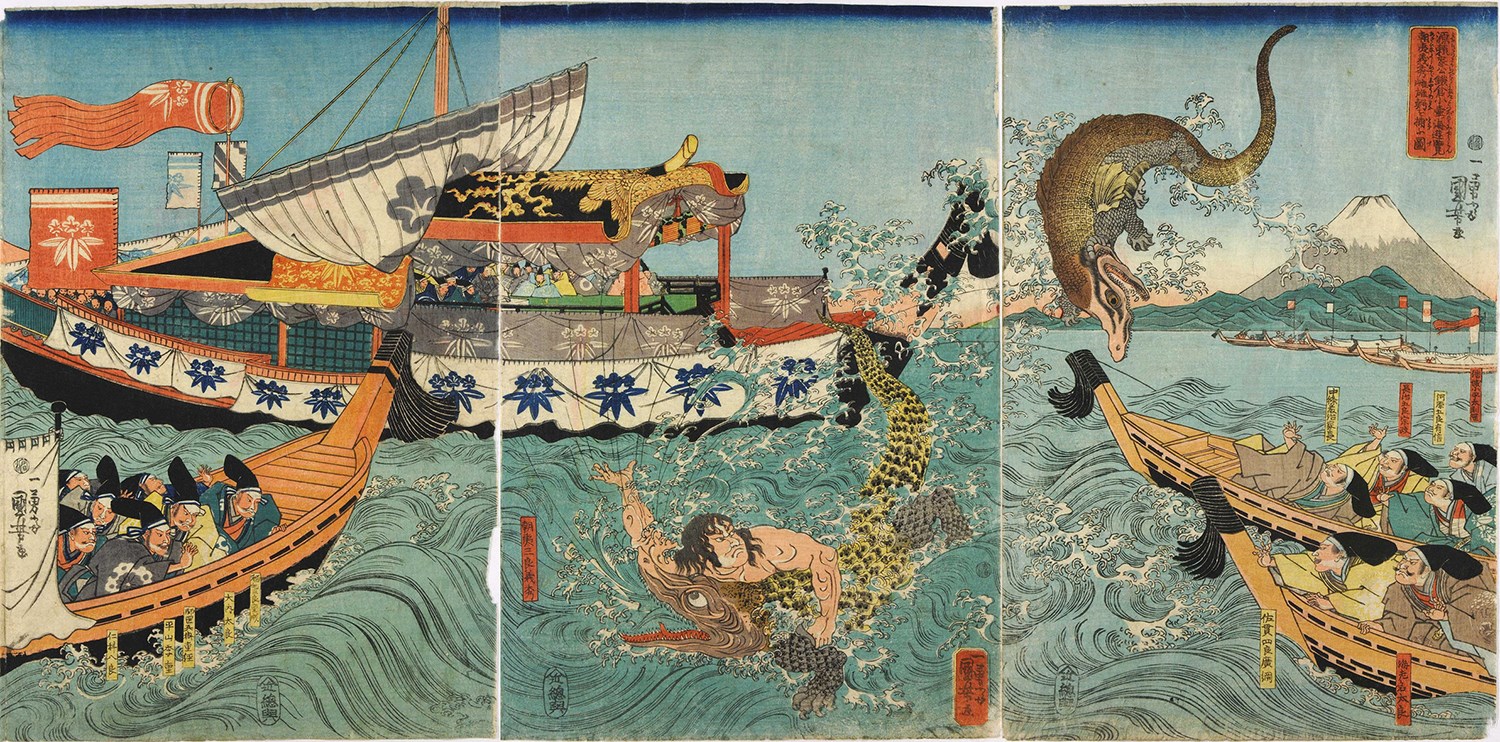Two of the world’s leading cultural institutions have agreed to collaborate on a range of initiatives linked to their collections and research activities.
National Museums Scotland and the National Museum of Japanese History, Sakura, Japan will work together on a range of activities, including exhibitions, educational and research initiatives and conferences over the coming years.
The agreement enhances the relationship between the two institutions at a time when National Museums Scotland is strengthening its links with Japan in the run-up to the opening of a new gallery at the National Museum of Scotland in 2018/19, which will provide new insights into its internationally important East Asia collections.
In addition, a new three-year curatorial post funded by the Japan Foundation will enable the significant enhancement of research into National Museums’ Japanese collections and their display in the new gallery.
The National Museum of Japanese History has embarked upon a project to research Japanese cultural artefacts in collections in Scotland. The Agreement will support the implementation of this project, enabling information exchange and associated educational activities.
A Memorandum of Understanding, underlining a commitment to greater joint working, was signed at a ceremony at the National Museum of Scotland on Thursday 16 March 2017.
It was signed by Xerxes Mazda, Director of Collections, National Museums Scotland and Dr Hiroshi Kurushima, Director-General of the National Museum of Japanese History.
Dr Gordon Rintoul, Director of National Museums Scotland said:
“I am delighted that our organisations have come together to sign a Memorandum of Understanding which will provide a formal framework for future collaborations. Working on an international level I look forward to our sharing expertise and knowledge and building on opportunities to deliver mutually rewarding outcomes across both our institutions.”
Dr Hiroshi Kurushima, Director of the National Museum of Japanese History said:
“This is a wonderful opportunity for both institutions to learn from each other and develop new ideas for our future research, exhibitions and programmes. Scotland and Japan have a shared history reaching back over a century. I am very excited to open a new era of our relationship though our work”.
Further information and images from Susan Gray, Press Office, National Museums Scotland on 0131 247 4088 or email s.gray@nms.ac.uk.
Further information about the National Museum of Japanese History from Public Relations Office, National Museum of Japanese History, email koho@ml.rekihaku.ac.jp.
Notes to Editors
- National Museums Scotland looks after museum collections of national and international importance and provides loans, partnerships, research and training in Scotland and internationally. Our individual museums are the National Museum of Scotland, the National Museum of Flight, the National Museum of Rural Life and the National War Museum. The National Museums Collection Centre in Edinburgh houses conservation and research facilities as well as collections not currently on display.
- National Museums Scotland holds the largest Japanese collection in Scotland, and the largest in the UK outside London. Comprising some 12,000 objects, it covers a wide range of material from the Neolithic period to the present day. In pictorial art there is a collection of around 4,000 woodblock prints, acquired in the 1880s, as well as a group of prints from the span of the twentieth century. There is a growing group of paintings in various formats from the 18th and 19th centuries. There are ceramics, metalwork (including cloisonné and bronzes), textiles, armour, swords and sword fittings, musical instruments, and decorative arts, including medicine cases (inrō) and toggles (netsuke). In addition, National Museums has a large collection of Japanese archaeology of the Jōmon period donated in the years 1908–12 by the Scottish physician Dr Neil Gordon Munro. He also gave a group of about 350 objects from the Ainu people of Hokkaido, including ritual items, domestic clothing and accessories, which are of international significance. In recent years, a strong collection of contemporary jewellery and crafts has been built up. Japan is also represented across the collections of natural history, military history, and science and technology.
- The National Institutes for the Humanities (NIHU) is a comprehensive research hub for the humanities. Transcending traditional academic lines and incorporating the perspective of the environment, it brings together scholarship in the various fields of the human sciences with the aim of developing new paradigms of research for tackling the many difficult problems of the twenty-first century resulting from the complex interaction of the history of human affairs with the natural world. NIHU serves as the umbrella organization for six inter-university joint-use institutions engaged in research in diverse aspects of the human sciences: The National Museum of Ethnology, the National Museum of Japanese History, the International Research Centre for Japanese Studies, the Research Institute for Humanity and Nature, the National Institute of Japanese Literature, and the National Institute for Japanese Language and Linguistics.

